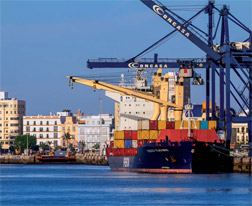Interview with Ignacio de la Torre
Partner
Arcano Valores
Madrid - SpainFinancial
Ignacio de la Torre has been a partner at Arcano since 2008. An expert on capital markets, he is academic director of the IE Business School finance master’s programmes. He holds a PhD in history and a degree in law from the Spanish Distance-Learning University (UNED), a degree in economics from Icade University and an MBA from INSEAD Business School in France. He has 17 years’ experience in investment banking, corporate finance, stock market analysis, media sales and European securities and derivatives sales at UBS and Deutsche Bank. He is the author of Ingeniería Financiera (Creative Accounting Exposed, published in English by Palgrave in 2008), a review of the accounting scandals of 1999-2004 and their connections with capital markets.
In addition to a number of research papers, he has written a doctoral thesis on the banking operations of the Knights Templar in the 13th century, which led to his first book, Los Templarios y el Origen de la Banca (The Knights Templar and the Origins of Banking, published by Dilema in 2004), a work the Nobel laureate Sir Aaron Klug praised as «a key step in research on the origins of banking». He has also published a book on the origins of Islamism, Islamismo: Desvelando el radicalismo (Islamism: Unveiling radicalism, published by Lid).
In 2009 he founded the NGO Financieros sin Fronteras (Financiers without Borders www.fsf-ngo.org). He has been an associate lecturer at IE Business School since 2002 and he was voted Best Teacher of the Financial Management Master’s degree in 2006. He has also been voted Best Teacher of the Finance Master at IE in 2014.





«Spain in 2014 is like Germany in 2004»
As part of his work at Arcano, Ignacio de la Torre has written two reports on the Spanish economy that have attracted considerable attention. The first report*, published in October 2012 was the first to actively recommend investing in Spain. His relentless stream of uncompromisingly independent ideas is entirely focused on helping to inspire confidence in Spain among institutional clients. Now is the chance, he argues, to invest in Spain.
* http://www.arcanogroup.com/sala-prensa/presentaciones-informes/
According to the report «Spain 2014 = Germany 2004», Spain’s outlook for 2014 is similar to Germany’s in 2004. Can you elaborate on that?
Germany’s structural reforms succeeded in adjusting seven or eight percentage points to its current account balance. Spain has achieved a 12% reduction over five years
Like Germany in 2004, Spain is a great exporting power. In fact, right now only Germany outperforms us in terms of exports-to-GDP. Spain has proved that exports are a driver of growth. Secondly, consumption and investment, which had been negative for three years, became positive again last autumn. This means GDP will start growing at a rate of 1% or above. So we have pulled out of recession and into growth, just like Germany did in 2004. Thirdly, the German economy succeeded in growing in 2004 without any growth in lending. Essentially, the Spanish economy used to be based on pumping credit into construction to deliver growth. That model leads to cancer. Today we have a model of production that generates growth without the need for a disproportionate increase in lending. That is a crucial point: GDP can continue to grow while lending intensity remains stable because exports do not depend on credit like construction does. This is another clear similarity with the German experience. And fourthly, Germany’s structural reforms succeeded in adjusting seven or eight percentage points to its current account balance. That was a historic shift that very few thought possible without currency devaluation - remember Germany no longer had the mark. In Spain we have achieved a 12% adjustment over five years, which is more than the Germans did. In the near future we will see a 3 to 4% current account surplus, the second largest relative to GDP of all western economies.
Have we now left recession well and truly behind?
Contagion from the property sector to finance has ceased, the negative feedback is gone and Spain has begun to export to the rest of the world. All the vicious cycles have reversed and become virtuous cycles
Yes, we have. Spain’s emergence from recession in 2010 proved delusive because balance sheets in the financial sector were not real at that time. As we have seen in Japan, a financial system in that condition will not lend its money. False balance sheets generate sovereign contagion and if sovereign debt is burdened by high interest rates, they reflect on the economy at large. The economy simply will not work without a healthy financial system. Following the recent reforms, we now do have a healthy financial system. Contagion from the property sector to finance has ceased, and the financial system’s exposure to real estate stands at only EUR 100 billion, compared with 400 billion a year and a half ago. So the negative feedback is gone and Spain has begun to export massively to the rest of the world. All the vicious cycles have reversed and become virtuous cycles. The greatest challenge we face now is accelerating costs, not a return to recession.
Is consumption showing signs of recovery?
Consumption edged into positive territory in the third quarter of 2013 and became stronger in the fourth quarter. It is growing at 0.3%, which is above the euro area rate of 0.2%. In truth, Spain has seen stronger growth than Europe and the indicators signal that we will continue to do so. The Spanish service sector indicator is at its highest level since 2007.
So what rate are we actually growing at?
Spanish year-on-year increases have been significantly outperforming the rest of Europe since last September. Car sales are picking up and clearly the other key lever for change will be construction. We are now building 35,000 homes a year, a third of the figure in 1959, when Spain had a population of 35 million. Construction will start to see marginal growth because available housing is running out in some areas. If 340,000 houses are being sold every year and 35,000 are being built, that means the construction rate should reach 250,000 homes a year by 2015, which is the historical average.
What other barometers can be relied on?
In 2007 the IMF said the Spanish economy was perfect as unemployment and default rates were falling, so they gave us a triple-A rating
The key is to watch the PMI1 because it reflects a country’s economic situation based on leading company performances. It is the best gauge to tell where a country is going. Stock and bond markets mirror the PMI and that has reportedly been gaining ground quite rapidly since the spring of last year, even outstripping the euro area and China. Being 50 the average, Spanish PMIs stand today at 54, with Chinese at 50, and the Eurozone at 52.
1 PMI: Purchasing Managers Index.
Does the Government take any heed of this, does it pay more attention to the IMF or does it decide exclusively at its own discretion?
Of course, any forecast from the International Monetary Fund (IMF) is politically significant, but technical government officials do watch the PMI. In 2007, the rating agencies said the Spanish economy was perfect as unemployment and default rates were falling, so they gave us a triple-A rating. And yet at that time I was telling my clients to invest in Germany rather than in Spain, in view of the risks and the signs emanating from the current account deficit (the second largest in the world in absolute terms), the construction boom and the rise in lending. They were very alarming indeed. In fact, they are the same indications I currently see in Brazil and other emerging economies.
And you were not wrong.
Well, no. I took the opposite view than I do now because the picture I saw was the opposite. But with the recent reforms I have taken a very positive view of Spain. When I saw that Spanish credit default swaps were higher than Egypt’s, I realised something was not right. How could a country like Egypt, which does not have a middle class, be a safer investment than Spain? That spurred me to write the report. A lot of cash has come into Spain since then. If you give a sick man the right treatment, he will get better. We know what is ailing Spain and liquidity is the treatment. Unless the economy receives some liquid cash, the patient’s condition will not improve. People are not aware of the massive inflow of cash coming in at the moment. Yet it explains the fact that economic parameters are being shortened to six months. It is a direct equation, so it is extremely difficult to predict using an econometric model. As a consequence of such liquidity realized GDP is being well above many forecasts.

Are we returning to the consumption levels seen at the beginning of the crisis?
Consumption is picking up and we see the chain of staff expansion, stock purchase and exports coming back into motion. Consumption will go back to normal. It was abnormally low in 2012, in fact that was the worst year since records started in 1971. Seven circumstances coalesced to cause a tremendous debacle:
- VAT and personal income tax went up.
- 500,000 jobs were lost.
- The labour reform led to an unprecedented 3.5% reduction in nominal salaries.
- Public servants were not paid their special bonus.
- Inflation stood at 3%, limiting purchasing power.
- Consumer confidence plummeted.
In 2013 and 2014, these circumstances are going back to normal, thus contributing to recovery:
- Public servants recovered their bonus.
- Inflation is at 0.3%, leaving an extra EUR 18 billion’s worth of purchasing power.
- Jobs are no longer being destroyed but are beginning to be created in gross terms, generating consumer confidence, which is at its highest for the past three years.
- Tax rises have stopped and people will start seeing reductions in 2015.
Will lending stabilise?
The figures show that non mortgage lending has stabilised in the banking sector since November. The important thing is that new loans are on the up, which is excellent news because it has happened much earlier than expected. In my report, I claim economists and econometrics are making a mistake by looking exclusively at bank lending because it is non-bank lending that is growing. That is why I talk about bonds and direct financing, which already amount to EUR 85 billion (8.5% of GDP). International banks are supporting Spanish companies, bank lending is stabilising and non-bank financing is starting to shoot up, all of which leads to the conclusion that 2014 will be the first year in which finance will enable GDP growth. However, finance is different from what it used to be. Companies are issuing bonds and an Alternative Fixed-Income Market has been set up to help them do that. Nonetheless, there is still a question mark over small businesses. The solution is to provide SME loans to open up securitisation markets, but it must be implemented at the European level. Work is already under way in this respect. Lending is being channelled towards small businesses, which are vital for the economy.
What is your view on non-bank financing?
Regulation should have been more countercyclical, imposing even larger provision and bank capital requirements to curb lending expansion in good times, and doing the opposite during bad times, that is, easing those requirements to stimulate lending
Statistics show that Spain has a 91/9 bank-to-non-bank ratio, which is far removed from Europe’s 50/50, much more from the US and the UK, which have 20/80 ratios. We are moving towards convergence with the European average, but I think we will be at 65/35 in 2020. The reason is that the more SMEs there are, the less non-bank financing you can have. It is not bad for banks and it is far better for businesses because a wider choice enables them to invest more and create jobs. They can turn to the markets or elsewhere for funding. There is traditional finance through the different kinds of bonds and direct financing operations where hedge funds lend money direct to the borrower. Insurance companies have a major role to play in this respect, as they can enter into the same deals as hedge funds themselves.

Should we start thinking the years of plenty will be back?
We will be returning to normality in terms of domestic demand -250,000 houses built, 1.2 million cars sold, exports stable at 35% of GDP, current account surplus- which is a major advance compared with the deficit we had in 2006. If I looked at the economy in 2018 and saw a 7% current account deficit with 600,000 homes being built and 1.8 million cars sold, I would say we’d better run away.
Why is systemic risk no longer an issue?
Systemic risk arises when a debt stock problem combines with a flow problem. Flow is negative, i.e. indebtedness grows each year, and on top of that there is a colossal debt stock. That used to be the case in Spain. Now the country has current account surplus and the private sector has gradually deleveraged. Families and businesses have reduced their level of debt much faster than expected. People are confident that public debt will be checked at 102 or 103% and nominal GDP will start growing at a faster rate than debt. It is still high but the main thing is to make sure it stabilises. Added to that, the financial system is no longer ridden with false balance sheets -which used to be a major problem- and positions in the property sector have been retrenched, so there really are very few sources of infection that systemic risk could spread from. My argument is that regulation should have been countercyclical, imposing larger provision and bank capital requirements to curb lending expansion in good times, and doing the opposite in bad times, that is, easing those requirements to stimulate lending.
You say the worst of the credit crunch is over. What is the evidence?
The fact that exports represent 35% of our GDP is an achievement of the Spanish professionals who have travelled the world over to market our products. Spain has taught the rest of the world a lesson on exporting success
Reports show that total lending to the private sector has stopped its downward spiral. Bearing in mind that it is new lending flow (the mathematical derivative) rather than lending stock that explains GDP, it is now accurate to say that finance is accelerating economic growth. That is the critical turning point with respect to 2007. SMEs will be the last to benefit from this flow, though. Unfortunately, we have plenty of S’s but not enough M’s, exactly the opposite of Germany. We should make it our quest to increase the number of M’s because they are good at exporting and easier to finance. That would raise productivity and salaries could go up.
What risks are there in the short-to-medium term?
Interest rate rise is the most obvious. The current situation indicates we are at a point of low inflation, which means interest rates will remain low. If that changes and inflation starts to appear in the US earlier than expected, with the attending increase in short- and long-term interest rates, that would be a hard blow for Spain as it would mean costlier borrowing and therefore less money left for consumption. There is also the risk of deflation, which would increase the debt burden and lessen people’s consumption capacity. There is an associated political risk: as soon as things get better, the will to reform diminishes and complacency sets in. Having said this, most reforms have already been accomplished; only the fiscal reform is pending.
Do the myths about the Spanish economy live on?
Myths are sustained by ideas that are persistently repeated inside and outside Spain. However, when Spain reaches its first surplus, there is hardly any media coverage. A part of the financial markets went short on Spanish bonds in the spring of 2011 and, for the rest of that year and the next, gloomy forecasts went round saying Spain would default. So everyone starts propagating that gloom and generating the vicious cycle that Spain is about to default, when the last time that happened was in 1883. In the autumn of 2012 people started putting some sense into all this behavioural finance.
But that is gradually being implemented.
The current situation indicates we are at a point of low inflation with low interest rates, but a rise in longterm interest rates would be a hard blow for Spain, as it would mean costlier borrowing and therefore less money left for consumption
500,000 public sector jobs have been cut and pensions and public servant salaries are rising below nominal GDP. Spain still has a large primary fiscal deficit, though, which Italy for instance does not have to face. The right balance between the private and public sectors has been neglected in Spain. Then there is also financing risk, but the most serious threat is over. And fiscal deficit risk, which is often confused with structural risk. If you win the lottery, you do not suddenly take on two butlers. The lottery is a oneoff but butlers have to be paid every month. That is what Spanish politicians did with the 40 billion euros revenues generated during the property boom (i.e. non-recurrent) - we spent them from 2003 to 2007 on recurrent expenses. The way to fix that is either a permanent raise in taxation or a permanent reduction in expenditure. We still have EUR 22 billion in structural deficit to deal with.
Is it not suicidal to transfer one’s production capacity to other countries?
The UK decided services were the way forward and France followed them. Ultimately, Germany has been proved right. Industry is one sector that is definitely going to thrive in Spain. When the democratic system was established in the mid 1970s, industry accounted for 35% of GDP; now it is only 14%. Even so, our situation is better than the US’s. Clearly, Spain’s high productivity and competitive labour costs are going to make us the factory of Europe. On the downside, industrial revival will not create as many jobs as construction would. To put it another way, high productivity generates fewer jobs.
Might corruption be included among Spain’s risks?
We are now suffering the consequences of all the profiteering that took place during the property boom years. When the tide ebbs, it exposes those responsible. Germany had very serious corruption issues but their intolerance solved the problem. In Spain, on the other hand, as in Italy, we tend to be more tolerant. Germans believe in their institutions; here, not so much. That is really concerning and a major risk. Spanish society is currently extremely belligerent towards corruption cases, which is very positive.
The Spanish government must be quite pleased with your conclusions.
I suppose they are, but I give credit to Spanish society as a whole, not just the government, for the fact that exports account for 35% of GDP. It is the people who have travelled the world over to market their products who have succeeded, not politicians. It is a heroic achievement on the part of Spanish exporters. We have taught the rest of the world a lesson.



